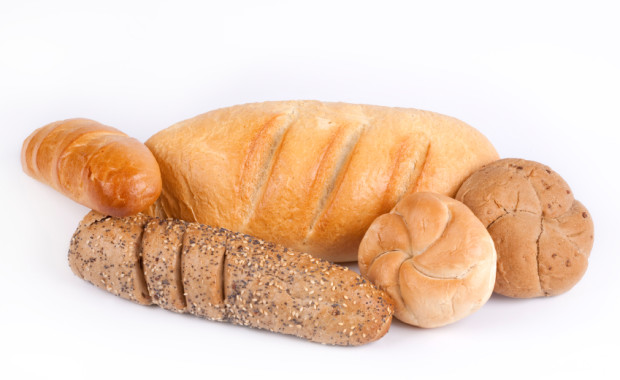It goes against the grain to say that bread is bad for you, but sadly there is a fair bit of evidence showing this to be the case.
What exactly is it about bread that’s so bad?
Mainly because bread contains wheat.
Any wheat containing bread – be it Lidl’s cheapest sliced white bread or an Artisan organic wholewheat loaf – they are all harmful.
Wheat? The staff of life? What on earth is wrong with wheat?
Well, as many of us probably know, wheat contains gluten.
And there are two main problems with gluten:
- Gluten is thought to disrupt appetite controlling mechanisms and to thus stop you from feeling full by blocking the action of a hormone called leptin.
- Gluten is believed to open up gaps in the gut lining, making your gut a bit too leaky.
How does gluten make your gut leaky?
By activating zonulin.
Why is a leaky gut a problem?
Because your gut lining is a barrier against the outside world, and a leaky gut lining lets in substances which shouldn’t be entering your body (such as undigested food particles and bugs), and this in turn increases your risk for developing an autoimmune disease , e.g. type 1 diabetes, rheumatoid arthritis, coeliac disease, MS, vitiligo and alopecia areata to name but a few.
In the long run, eating wheat can lead to poor appetite control and over eating, which sometimes results in obesity and diabetes. (More than a quarter of UK teenagers are now overweight or obese!). So, yes, you can partly blame your excess weight on bread playing havoc with your physiology.
You may be lucky enough to be slim and diabetes-free whilst eating bread every day, however, I would still urge you to hold off on that sandwich; wheat has other drawbacks besides it’s gluten content.
Here are a few more reasons to avoid wheat:
Firstly, wheat contains something called ‘WGA’ (aka ‘Wheat Germ Agglutinin’).
What exactly is ‘WGA’?
WGA is a type of ‘lectin‘; most foods have some ‘lectins’ in them, but the ‘WGA lectin‘ from wheat seems to be particularly toxic. (The main purpose of WGA is to protect the wheat from insects, fungi and bacteria; and modern wheat has been bred to have a high WGA content ).
This ‘WGA’ in wheat is a tough cookie; neither cooking, sprouting, fermentation nor digestion break it down.
How does WGA harm humans?
- By stimulating inflammation – minuscule amounts of WGA (a few nanomoles) are enough to do this; and we now know that inflammation is at the root of heart attacks, strokes, diabetes, certain cancers and even obesity.
- WGA damages your gut lining and makes it leaky, which increases one’s risk for autoimmune diseases (as described above).
- WGA mimics insulin; this increases your risk for developing diabetes and also makes it more difficult to breakdown fat.
- WGA could be one of the reasons underlying the worldwide epidemic of vitamin D deficiency by interfering with it’s metabolism.
- WGA can be neurotoxic – it crosses the ‘blood-brain-barrier’ and damages the outer protective coating of nerves as well as inhibiting something called ‘nerve growth factor‘ which is important for the growth, maintenance and survival of nerves.
Besides gluten and WGA, wheat contains another potentially damaging substance: ‘phytic acid‘ which is an ‘anti-nutrient‘ – it interferes with the absorption of other nutrients such as iron, calcium, zinc and magnesium.
And finally, wheat might exert adverse effects on the composition of one’s gut bacteria, predisposing you to more obesity-causing bugs in your gut. This post discusses the links between diet, gut bacteria and obesity.
In summary, it is gluten (which is a protein), WGA (a lectin), phytic acid (an anti-nutrient) and gut bacteria changes which are the harmful components of bread.
Ideally try and cut out, or at least cut down on all grains, not just wheat containing foods – a more in-depth explanation about other grains to follow.
As I’ve said in several other posts on this website, all carbohydrates and fats are not villains – the type of carbohydrate or fat is of paramount importance.
For example, carbohydrates from fruit and vegetables are fine, as are the fats in fish; whereas the carbohydrates from refined sugar or the fats in refined oils are detrimental to health.
So there’s no need to agonise over whether you should be eating a ‘low-fat’, ‘low-carbohydrate’, or ‘low-calorie’ diet. Instead, focus on the type of fat or carbohydrate that you eat.
Is there a way out?
Yes! Eat a Palaeolithic diet – vegetables, fruit, fish, eggs, unprocessed meat, nuts and not much else.
(Or try and eat this way for at least 80% of the time, which is what I aim for).
10 FAQs about the Palaeolithic diet
In case you are at risk of taking yourself too seriously, click here.


Great information Madhvi!
Thank you Madhvi for yet again, being very helpful with more vital information for a healthy lifestyle. You seem to explain it in simple enough terms to ‘get it’.
From now on, I shall be definitely ‘watching’ what I eat!
Michaela
Thanks Michaela!